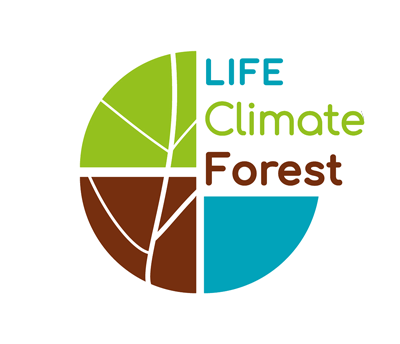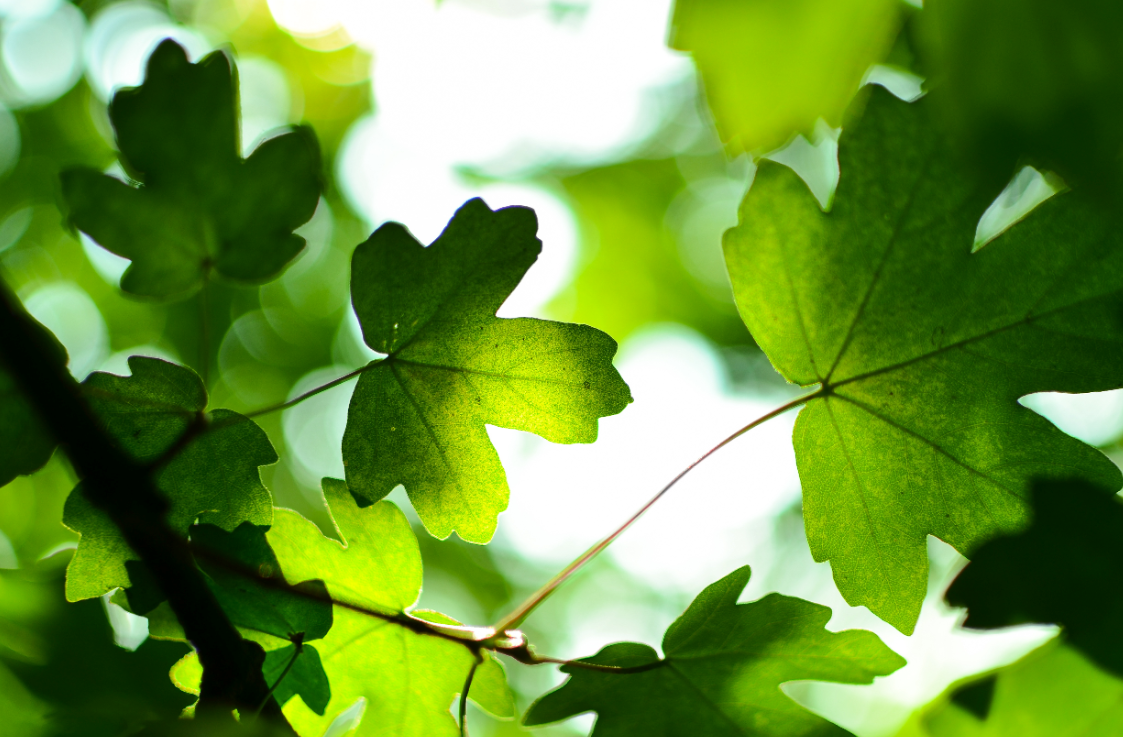Demo forest Emmerdennen
- Owner: Staatsbosbeheer
- Location: Municipality of Emmen
- Size: 85 ha reference site (total 350 ha)
- Soil: base of field and hairy podzolic soils
Visiting this demonstration forest?
Emmerdennen is freely accessible to visitors. The best way to reach the forest is via the railway station. From there, you can walk east into the forest.
By car, you can park at Emmerdennen car park near Hunebed D45. If you park your car here, you can cross the road on the east side and easily view the reference site, see map below.
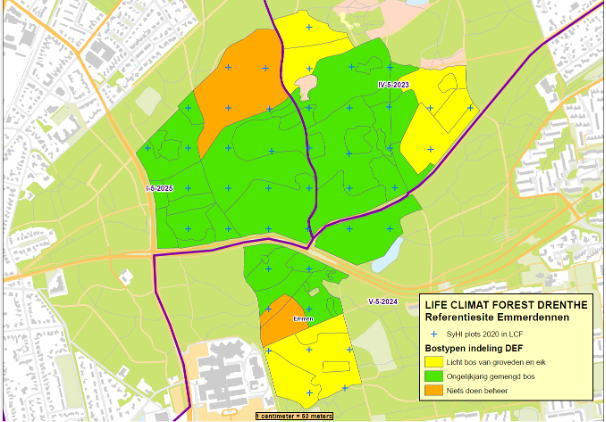
Do you have any questions about managing or visiting this reference site? If so, please contact administrator Wilco van Tellingen at w.tellingen@staatsbosbeheer.nl.
Forestry Emmen-Sleen
The reference forest is part of the Emmen-Sleen forestry. Sustainable and climate-proof forest management has been carried out in these forests for some time, with tree-oriented forest management having been applied in some forest sections before. For the LIFE Climate Forest project, a reference site with different forest types, tree species, ages and initial situations has been designated to experience and learn from tree-oriented forest management and its measures on a larger scale. Here, the focus is on small-scale, tree-oriented forest management in an uneven-aged and mixed forest.
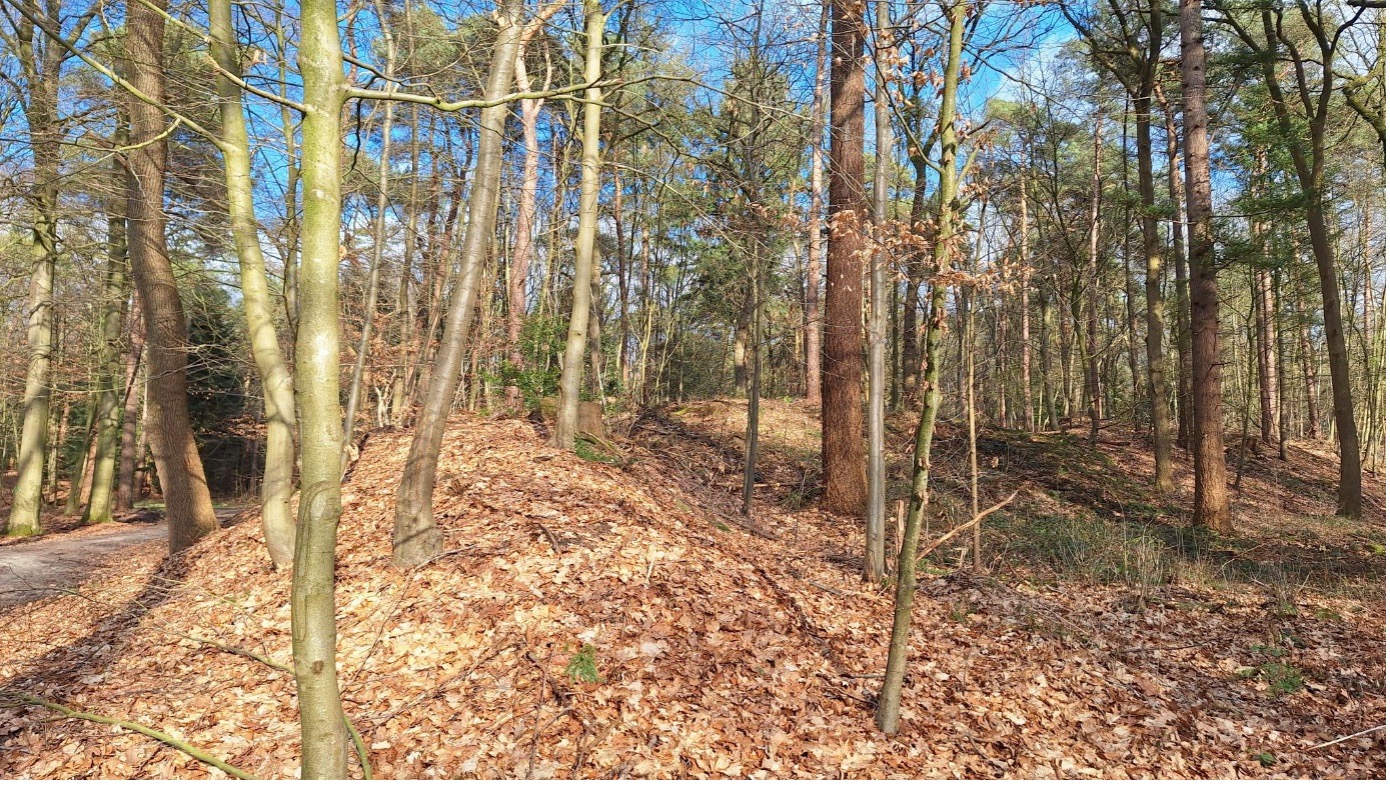
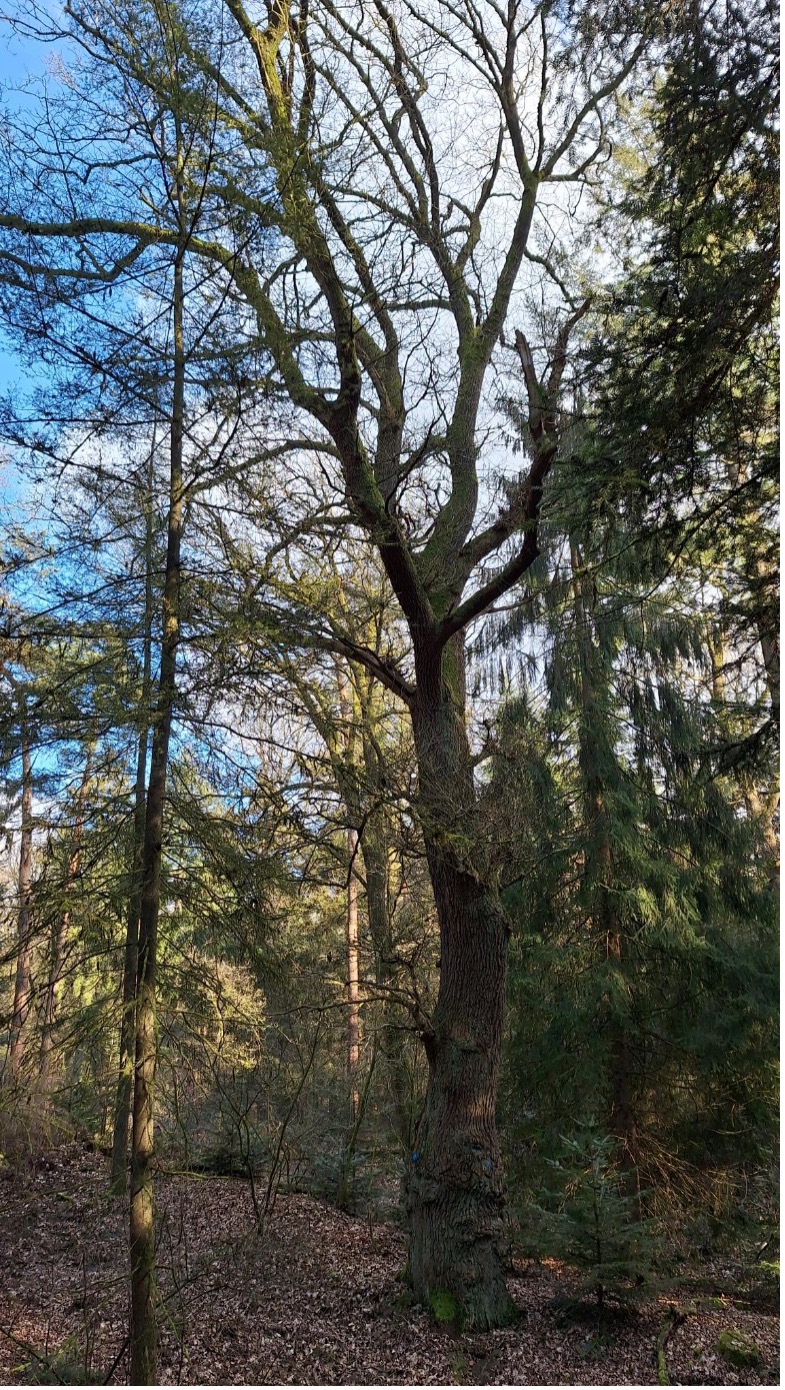
Framed tree - an ancient oak tree
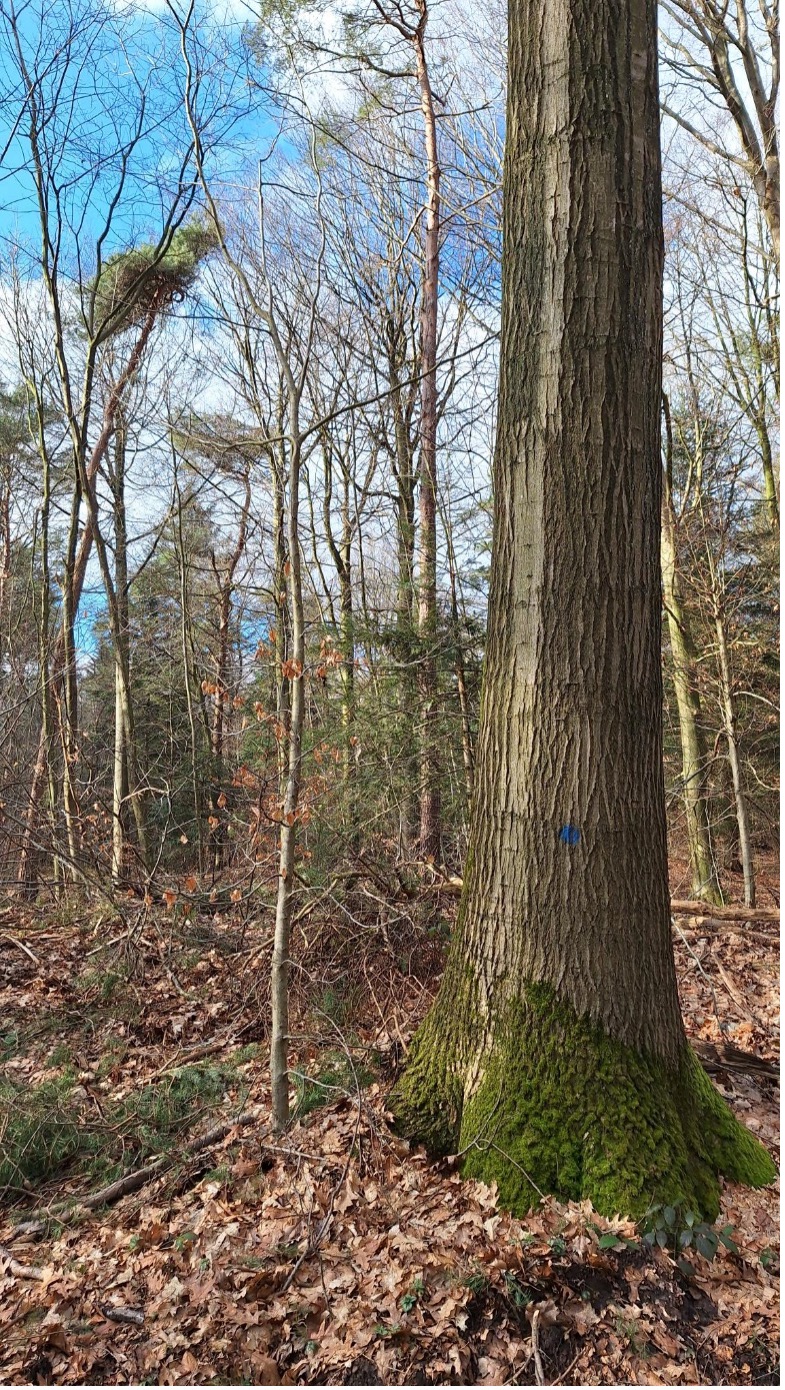
Future tree - a thick American oak for future saw timber
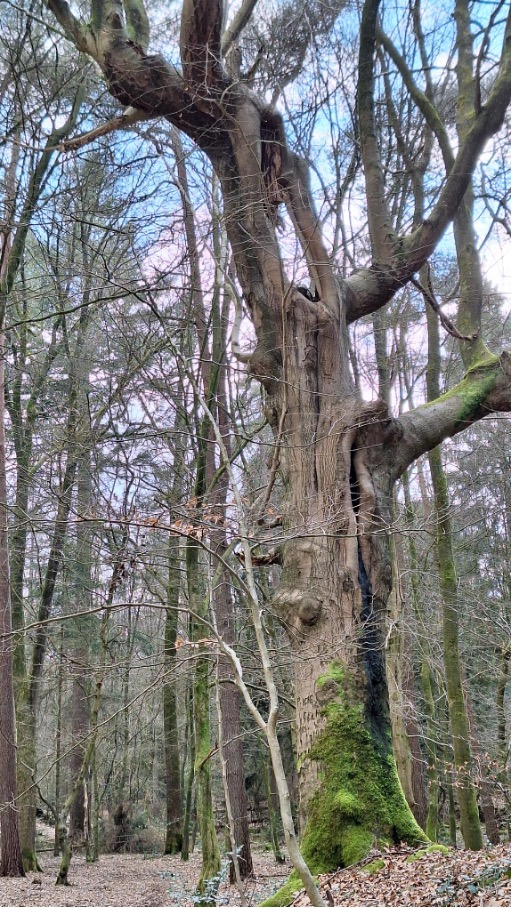
Habitat tree - a beautiful hollow beech tree
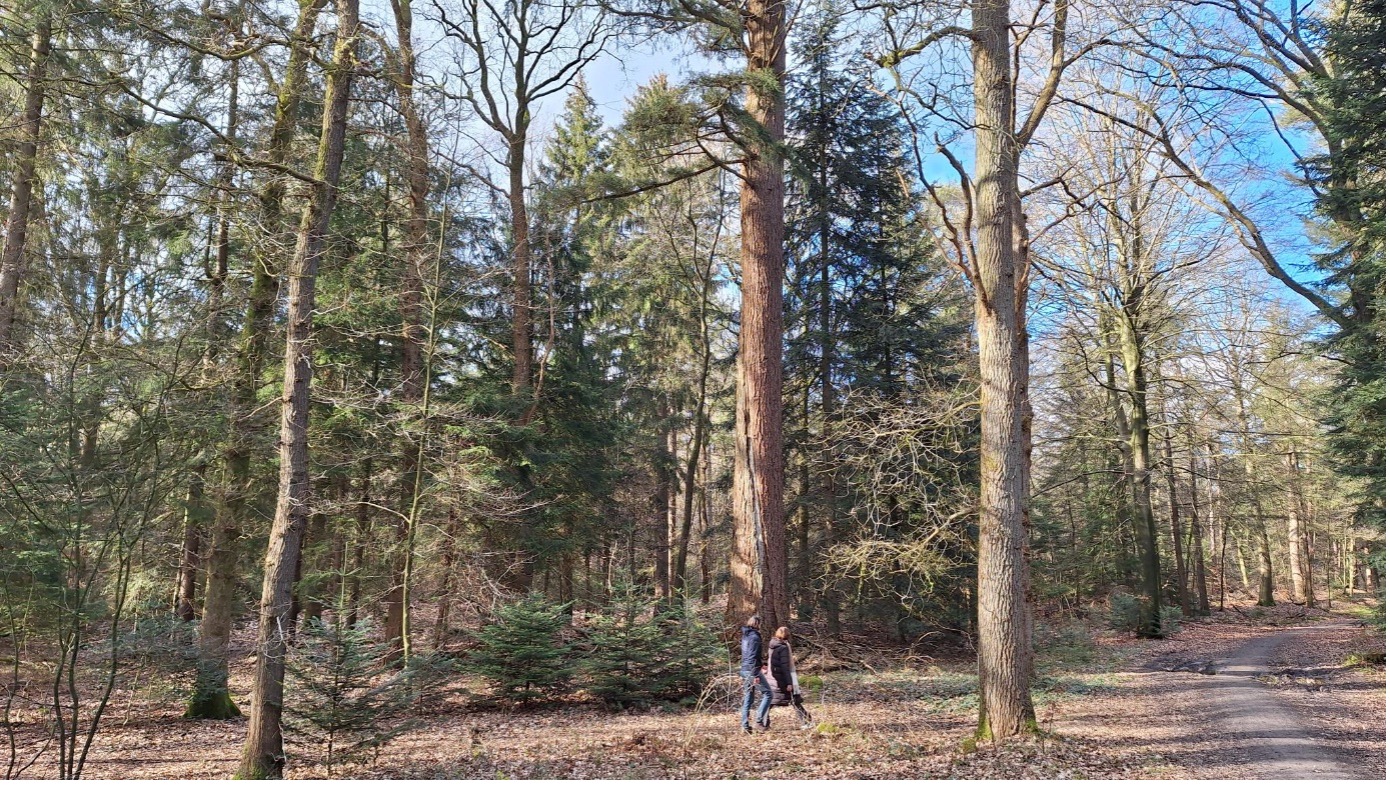
Experience tree - a huge Douglas fir
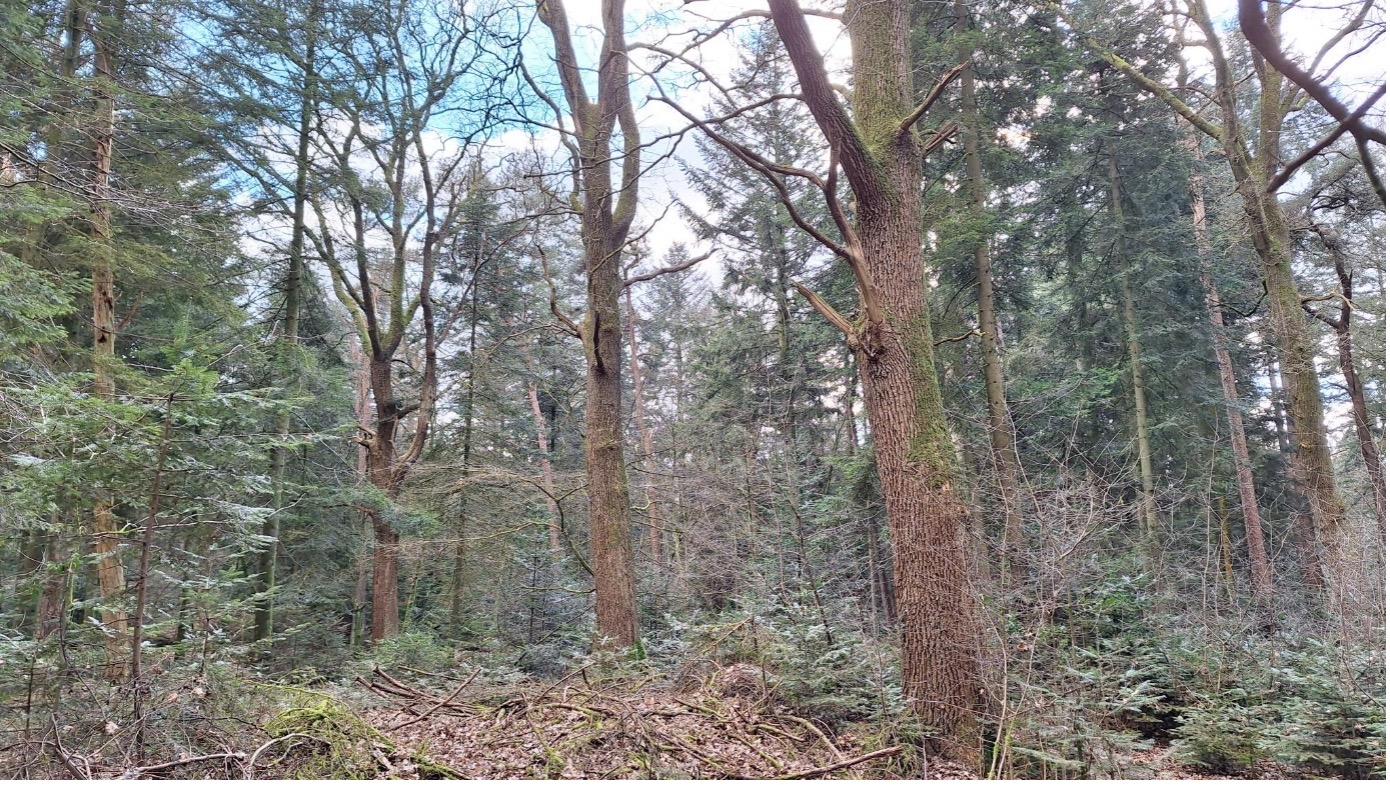
OAD core - consisting of group of ancient oaks
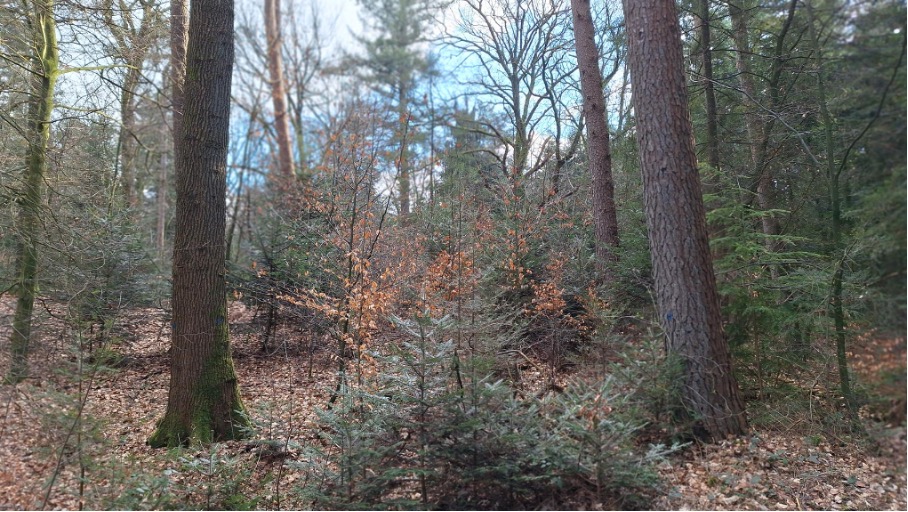
Forest rejuvenation
Bostracken
To get a good picture of the forest, it is important to know what is there and how the forest functions. To achieve this, we have mapped the forest using forest tracking. This means that you walk through the forest in a targeted way and assess and record the forest at tree level via GPS. We assessed the following trees, among others:
- Framed trees: These are trees that may remain a permanent part of the forest. Think, for example, of a huge thick Douglas fir, ancient oaks and imposing pines.
- Aberrant species: To preserve and, above all, enhance the mixture and variation in the forest, we have marked and recorded all the trees that are sparsely present here for each cluster of forest that is somewhat 'the same'. For example, a lone birch in an oak section or a lime tree among the larch trees. Because Emmerdennen is so varied, it regularly happens that a tree species is an aberrant species at a certain spot, while 100m further on this species is dominant.
- Future treesThese are mainly trees that fulfil a specific function with regard to timber production in the forest. For example, these are trees with a good wood quality (straight, branch-free rootstock and preferably as thick as possible). These trees receive preferential treatment in order to grow quickly, but unlike a skeleton tree no lasting role in the forest. They will eventually be felled for such things as sawlogs for building houses. Developments over time can, however, trace the function of these trees. For instance, if a raptor nest is established in them, this tree will have a different function.
- QD trees: These are thinner trees that have enough potential to grow into beautiful straight trees and can provide good sawtimber in the future. These trees are marked and also pruned to provide a nice, branch-free trunk in the future.
- Habitat trees: These are trees with increased (potential) natural value, such as trees with cavities, nests or trees that are (almost) dead. Also a skeleton tree may eventually become a habitat tree be due to natural mortality, for example.
- Experience trees: These are mainly trees that stand out a lot in the forest. Like a hugely thick tree along a footpath or just a tree with a crazy trunk shape.
Designating the trees mainly gives an important insight into the forest structure and blending of the forest. But nothing is more changeable than nature and with it, the functions of the designated (future) trees may also change. For instance, a future tree where the top cracks during a storm turns into a habitat tree. So in the future, we need to repeat the tracking.
OAD Cores
OAD (old, decaying and dead trees) are an important part of the forest. These trees offer a great diversity of species such as mushrooms, all kinds of insects that specifically live in dead trees and all kinds of birds. Besides the habitat trees already identified during forest tracing, clusters have also been identified that are allowed to develop naturally. These are mostly groups of thick trees together or special forest types. Three large blocks have also been designated as a kind of reference forest to experience how the forest develops without interventions. Together, these three elements form a network. By designating them now and recording them via GPS, these clusters will be preserved in the future as long as they remain ecologically valuable.
Forest rejuvenation
An essential part of a forest is a new generation of trees. During the forest tracing process, we inventoried the spontaneous rejuvenation groups and give them room to grow on by giving them sufficient growth space. We do this by cutting down (thick) trees to create more light for the young trees to grow. This also creates much more structure and thus variety in the forest. This rejuvenation is also actively managed to preserve the mix and quality present by selectively favouring trees here.
Trees are also cut down in places where no rejuvenation is yet present. We also replant different species in these places. These are species that can provide good timber quality, but also species that contribute to a more climate-resistant forest. These are species that have a positive effect on the trees, but also better withstand drought.
Timber harvest
After all trees have been marked, the next step is to favour the trees that need space to grow well and remain vital. In the process, the largest competing tree next to it - for example, a deviant tree species - is marked with paint and cut down later. To make it known which interventions we need to carry out, we work with fixed colours. For example, a blue dot means that the tree must be protected and an orange dot indicates that the tree must be cut down.
Thinning paths
To protect the soil, we work with fixed thinning paths over which the machines have to drive. They are not allowed to deviate from these. We recorded the thinning paths with GPS and marked them with white stripes. They are roughly every 40 metres through the forest, but due to the hilly terrain this is not feasible everywhere.
